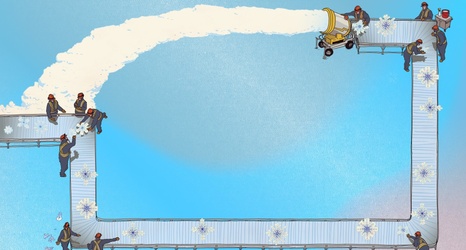Snowmaking at the Olympics is hardly new, first occurring in 1980 when stubborn skies over Lake Placid led to staffers shoveling truckloads onto barren cross-country ski trails. And thanks in part to climate change, the practice has become increasingly necessary, with subtropical Sochi using about 80% man-made snow in 2014 and arid PyeongChang topping 90% four years later.
But the 2022 Games will take it one step further: None of the snow will be real. At both the alpine skiing venue in Yanqing, a mountainous Beijing suburb, and at the biathlon, cross-country, freestyle, nordic, ski jumping and snowboarding venues in Zhangjiakou, a ski destination 100 miles northwest of the host city, the temperatures regularly dip below freezing, but natural monthly snowfall is best measured in centimeters.
